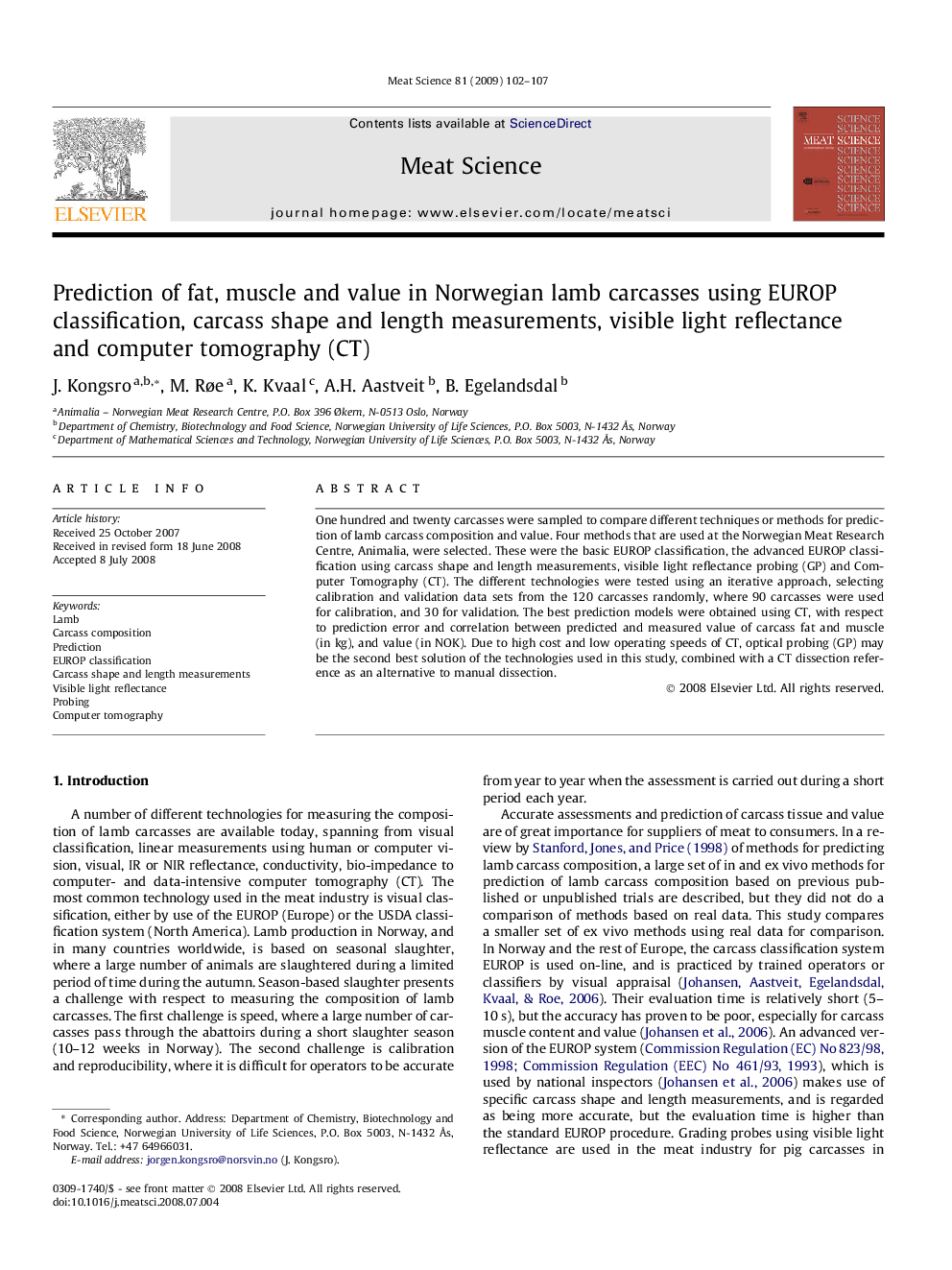| Article ID | Journal | Published Year | Pages | File Type |
|---|---|---|---|---|
| 2451318 | Meat Science | 2009 | 6 Pages |
One hundred and twenty carcasses were sampled to compare different techniques or methods for prediction of lamb carcass composition and value. Four methods that are used at the Norwegian Meat Research Centre, Animalia, were selected. These were the basic EUROP classification, the advanced EUROP classification using carcass shape and length measurements, visible light reflectance probing (GP) and Computer Tomography (CT). The different technologies were tested using an iterative approach, selecting calibration and validation data sets from the 120 carcasses randomly, where 90 carcasses were used for calibration, and 30 for validation. The best prediction models were obtained using CT, with respect to prediction error and correlation between predicted and measured value of carcass fat and muscle (in kg), and value (in NOK). Due to high cost and low operating speeds of CT, optical probing (GP) may be the second best solution of the technologies used in this study, combined with a CT dissection reference as an alternative to manual dissection.
